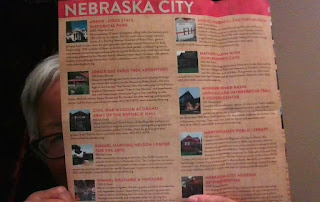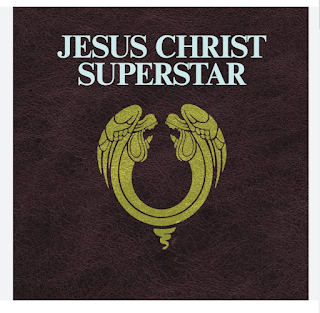Crepe de Chine- by Mark Doty
Mark Doty
Mark Doty (born August 10, 1953) is an American poet and memoirist best known for his work My Alexandria. He was the winner of the National Book Award for Poetry in 2008.[1]
Mark Doty was born in Maryville, Tennessee,[2] to Lawrence and Ruth Doty, with an older sister, Sarah Alice Doty. He earned a Bachelor of Arts from Drake University in Des Moines, Iowa, and received his Master of Fine Arts in creative writing from Goddard College in Plainfield, Vermont.[3]
Despite the bizarre happenings at the coffeeshop in Des Moines called Smoky Row, in which the poetry group meeting on Zoom experienced odd static which froze our screens and distorted the sound compelling me to log off and miss the reading altogether, and in which I later returned with a friend and inadvertently left my computer satchel unattended on a chair inside the restaurant/coffeehouse while my friend and I talked for an hour on the outdoor patio; I still have fond memories of preparing for that reading in which I learned how to pronounce several new words that appeared in poems by Mark Doty: bodegas, crepe de chine, tableau, coiffeur, and coiffure. I found quite a bit of humor in the fact that the word "T-A-B-L-E-A-U" which has three consecutive vowels is pronounced "tab-blow" wherein those three vowels none of which are an 'O' together are pronounced as a long O. Thank God I was raised in America and don't have to learn English as a second language!
Of note, two very similar words: COIFFEUR and COIFFURE, are pronounced differently-- and have totally different meanings. COIFFEUR (qua-'fer) is a male hairdresser and COIFFURE (qua-'fure) is a hairdo. Crepe de chine is a soft thin material, possibly silk which probably feels pleasant against the skin.
I also learned the words millefiori, abalone, and verdigris--the last of those words has four optional pronunciations! Each of these three words ends with a long "E". Verdigris by the way is that blue green color on old bronze sculptures, and millefiori is a decorative glass, but the word literally means 1000 flowers. Always searching for new aliases to use on the internet I like the name Millie Fiori.
millefiori- colored glass
French derivation of "1000 flowers"
I am in awe of this fellow's way with words...and punctuation. He uses the whole vast array of punctuation in his poetry including colons, hyphens, hyphenated words, and parentheses. And, it is particularly irksome the way he breaks up single sentences across paragraphs-- placing the beginning of the phrase at the end of one stanza and the rest of it at the beginning of the next stanza. Reading aloud some of Mark Doty's poems is equivalent to an athletic event of the tongue.
====
CREPE DE CHINE, by Mark Doty
These drugstore windows
–one frame in the mile-long film
of lit-up trash and nothing
fronting the avenue, what Balzac called
"the great poem of display"–
are a tableau of huge bottles
of perfume, unbuyable gallons of scent
for women enormous as the movie screens
of my childhood. Spiritual pharmaceuticals
in their deco bottles,
wide-shouldered, flared,
arrayed in their pastel skylines,
their chrome-topped tiers:
a little Manhattan of tinted alcohols.
Only reading their names
–Mme. Rochas, White Shoulders, Crepe de Chine–
and I'm hearing the suss of immense stockings,
whispery static of chiffon stoles
on powdered shoulders,
click of compacts, lisp and soft glide
of blush. And I'm thinking of my wig,
my blonde wig, and following the cold sparkle
of pavement I'm wanting not
these shoes but the black clatter
and covenant of heels. Next door
the Italian baker's hung a canopy of garlands
and silver shot, bee lights and silk ivy
high over the sugary excess
of his pastries, and I want
not his product but his display:
I want to wear it,
I want to put the whole big thing
on my head, I want
the tumbling coiffeurs of heaven,
or lacking that, a wig
tiered and stunning as this island.
That's what I want from this city:
to wear it.
That's what drag is: a city
to cover our nakedness,
silk boulevards, sleek avenues
of organza, the budding trees
along the avenue flaunting their haze
of poisonous Caravaggio green . . .
Look how I take the little florists' shops
and twist them into something
for my hair, forced spiky branches
and a thousand tulips. Look, my sleety veil
of urbane rain descends, unrolls
like cinema's dart and flicker, my skirt
in its ravaged sleekness, the shadows
between buildings raked and angled
into these startling pleats,
descending twilight's gabardine
over the little parks and squares
circled by taxis' hot jewels:
my body
made harmonious with downtown.
Look how I rhyme with the skyscraper's
padded sawtooth shoulders,
look at the secret evidence of my slip
frothing like the derelict river
where the piers used to be,
look at my demolished silhouette,
my gone and reconstructed profile,
look at me built and rebuilt,
torn down to make way,
excavated, trumped out, tricked out,
done, darling,
in every sense of the word. Now,
you call me
Evening in Paris, call me Shalimar,






Comments
Post a Comment